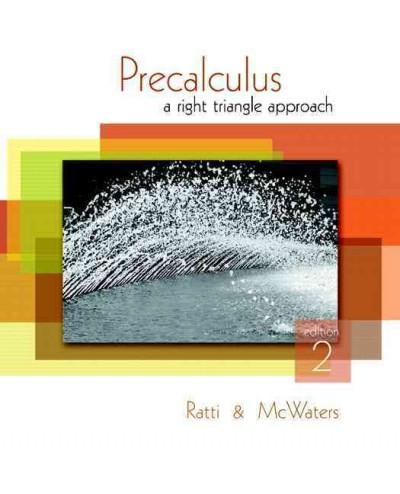Dr. Marion STP 226 Spring 2020: Project 2 Arizona State University School Of Mathematical & Statistical Sciences For full credit, you must show All your work and Explain All your answers! Point values given are those I will use If I choose to grade that problem. Points 1. In Project 1 this Spring, you studied recording times in minutes for a sample of Dr. Marion's 33 recordings of Gustav Mahler's 1st Symphony: 55 49 50 52 53 56 55 53 57 59 52 55 50 50 62 53 58 58 63 51 52 51 54 65 60 57 57 56 54 56 47 48 52 a. Estimate the mean recording time for Mahler's 1st Symphony. (5) b. To draw any inferences from these data, what must we assume and why? (10) c. Find a 95% confidence interval for the mean recording time of all recordings (5) st of Mahler's 1 Symphony. d. Find a 90% confidence interval for Mahler's 1st Symphony mean recording (5) time. Which of your two intervals is wider, and why? (5) e. What hypotheses would you use to test that the mean recording time for (10) st Mahler's 1 Symphony is significantly longer than 52 minutes? Define in words any parameters you use in your hypotheses. f. What test-statistic should you use to test these hypotheses? (5) What is the sampling distribution of this test-statistic if Null H0 is true? (5) g. Find the P -value for this test-statistic, state your conclusions, interpret the (10) result, and compare your result to the interval in a. for appropriate value . (10) h. If your friendly local Statistics professor informs you that actually 4 for all recordings of Mahler's 1st Symphony, how does this change your answers to b.-g.? i. What must we assume about our sampling population, and why? (5) ii. Find a 95% confidence interval for the mean recording time. (5) iii. Find and compare a 90% confidence interval for the mean recording time. (10) iv. What hypotheses should we use to test if the mean recording time for (10) Mahler's 1st Symphony is significantly longer than 52 minutes? v. What test-statistic should we use to test these hypotheses? (5) vi. What is the sampling distribution of this test-statistic under Null H0 ? (5) vii. Find the P -value, state and interpret your conclusions at = 0.02. (15) viii. Explain how and why your test results change. (10) i. Using = 4, and your sample mean, estimate the probabilities that: i. Mean recording time of 64 recordings exceeds 55 minutes. (5) ii. Total recording time of 36 recordings exceeds 30 hours. (5) j. Using = 4, how large a sample would we need in order to estimate mean recording times for Mahler's 1st Symphony to a: i. 95% error margin of 3 minutes? (5) ii. 90% error margin of 2 minutes? (5) iii. Compare your answers and explain their dierence. (5) (155) 2. As bridge building, craftily clever Calpurnia does double duty dinners, emceeing elegant, elegiac, eleemosynary events; for forty favorite fat-cat friends, Georgia's golden girl gladly helps heavy hitters initiate inimitable joviality. At her current bash, Calpurnia entertains 25 revelers who shell out $12,500 to donate to charity. Points a. Estimate the mean donation for Calpurnia's population of fat-cats. (5) b. To draw any inferences from these data, what must we assume about the population of fat-cat donations, and why? We assume this for the remainder of this problem. (10) c. If s = $125, find a 96% confidence interval for Calpurnia's mean donation. (5) d. Now find a 99% confidence interval for the population mean donation. (5) Compare your answer with part b.: which interval is wider, and why? (5) e. Calpurnia believes she can rake in more than $400 per party-goer, on average. What hypotheses should she use to test this? Define in words any parameters. (10) f. To test these hypotheses, what test-statistic should Calpurnia use? (5) What is its sampling distribution under Null Hypothesis H0 ? (5) g. Find the P -value for your test-statistic, state your conclusions at = 0.02, (10) and interpret the result. Is it consistent with your intervals in b.-c.? (10) h. Suppose Calpurnia believes that the standard deviation of her entire population of fat-cat fleecings is more like = $100. Repeat parts b.-g. for this new assumption. i. What must we assume about our sampling population, and why? (5) ii. Find a 96% confidence interval for Calpurnia's mean donation. (5) iii. Find and compare a 99% confidence interval for her mean donation. (10) iv. What hypotheses should she use to test this? Define any parameters. (10) v. What test-statistic should Calpurnia use to test these hypotheses? (5) vi. What is the sampling distribution of this test-statistic under Null H0 ? (5) vii. Find the P -value for your test-statistic, state your conclusions at = 0.02, (10) and interpret your result. Is it consistent with your intervals in g.i.-ii.? (10) vii. Find the P -value for your test-statistic, state your conclusions at = 0.02, (10) and interpret your result. Is it consistent with your intervals in g.i.-ii.? (10) i. Using = $100, and Calpurnia's estimated mean from part c., estimate the probabilities that Calpurnia's: i. Mean donation from a party of 25 exceeds $520. (5) ii. Total donations from a party of 100 exceeds $48,000. (5) j. Using = $100, how large a sample would Calpurnia need in order to estimate her mean fat-cat fleecings to a: i. 96% error margin of $20? (5) ii. 99% error margin of $20? (5) iii. Compare your answers and explain their dierence. (5) (175)







